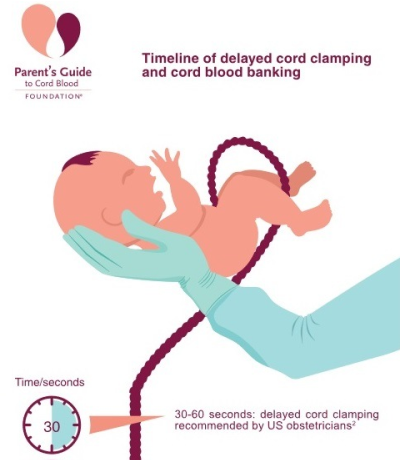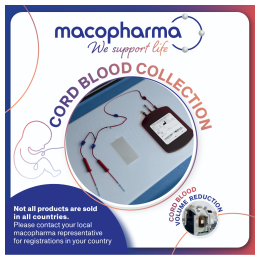You are here
I’m Pregnant – What do I Need to Know?
This is the first in a series of interviews with Labor and Delivery nurse Kim Petrella, who is an advisor to Parent’s Guide to Cord Blood Foundation. Kim finds that whenever a friend of the family gets pregnant, they turn to her and ask “What do I need to know?!” After a lifetime of experience delivering thousands of babies and educating other labor and delivery staff, Kim has boiled down what you need to know to four topics:
- Be Open and Flexible!!! This includes being open to back-up plans.
- Choose a healthcare provider that you trust.
- Research your delivery center.
- Research your birth options, but remember to be open and flexible.
 Kim cannot emphasize this enough. “Babies have a sense of humor” she says, “so that no matter what you had planned in advance, they will find a way to change the script”. If you have fixed ideas about how your birth should go, like insisting that you don’t want an epidural under any circumstances, then you are setting yourself up for disappointment if things don’t go the way you planned. “The more you have tunnel vision, the more you miss opportunities to have a delivery that you are happy with.”
Kim cannot emphasize this enough. “Babies have a sense of humor” she says, “so that no matter what you had planned in advance, they will find a way to change the script”. If you have fixed ideas about how your birth should go, like insisting that you don’t want an epidural under any circumstances, then you are setting yourself up for disappointment if things don’t go the way you planned. “The more you have tunnel vision, the more you miss opportunities to have a delivery that you are happy with.”
“There are all sorts of options that you may want to consider for your birth plan, but remember to stay open and flexible, and to treat your options as preferences, not demands.” Being open and flexible to accept changes in your birth plan will enable you to better enjoy the birth experience. If you already have back-ups to your plans, then you are less likely to feel stressed if the first plan has to be changed.
“Childbirth is supposed to be happy. It’s supposed to be a birthday party!” The goal of every birth plan should be to end with a healthy mommy and a healthy baby, no matter how the baby came out of you. Even if the natural birth turned into an emergency C-section, even if the baby spends time in neonatal intensive care unit (NICU), being open and flexible can make these events less stressful too. If everyone on your team can agree to focus on a healthy mommy and a healthy baby as the goal, then you are setting yourself up for success.
“This seems somewhat simple but is so important. If you do not trust your care team, then you may not listen to them, and this can lead to conflict during the pregnancy and delivery.” Kim’s advice is to “stay off social media” (except this blog, of course), “where the latest and greatest influencer will tell you all kinds of do’s and don’t’s”. Do not try to run your delivery based on videos you saw on TikTok, many of which are based off a few individuals’ personal experiences. As many laboring women as there are in the world, there are that many variations on labor and delivery. Your delivery experience is unique to you. “The moms on TikTok may have great advice as to what to pack and what gadgets to buy, but only those involved with your care and comfort, including your family and your care team, can make the best decisions with you”.
Consider working with a doula. Some expectant moms have a strong and knowledgeable guiding figure that they trust to coach them through labor. It can be your mother, your mother-in-law, your partner, a best friend, or whomever. Your coach does not need to be female or experienced at having babies. But if you don’t have a coach that will be with you and advocate for you during delivery, then a doula can fill that gap. Even if you have a coach, a doula can partner with your coach to make them feel more confident as a comforting support person. Medical studies have shown that doula support leads to better birth outcomes.
No matter how low risk your pregnancy was before you went into labor, there is always a chance that something will happen during labor that requires a higher level of care. If you are planning a home birth, or a birth in a birthing center, you are depending on your healthcare provider to acknowledge if it would be safer to complete your delivery in a hospital. How long would it take to get to the nearest hospital that has a surgical team and a NICU?
If your plan for pain control changes, how long would it take for an anesthesiologist to respond? In smaller hospitals, anesthesia staff might not be available on site and regulations allow them to be up to a half hour away from the hospital. Waiting for anesthesia to arrive and get briefed on your case can delay the timing of an epidural. Larger hospitals have anesthesia on site 24/7. Epidurals are rarely immediate, but knowing that anesthesia is readily available can be reassuring.
“Speak to your midwife and/or your obstetrician to discuss your risk factors and your baby’s risk factors. This discussion should weigh heavily on the decision of where to deliver your baby.” Should your care team advise you to deliver where there is a NICU, understand that NICU’s with a higher number rating are qualified to deliver a higher level of critical care. “Granted, the majority of deliveries will be low risk and the majority of babies will transition to life outside of the uterus very well, but should you or your baby have health concerns, find a delivery hospital with a NICU that is level 2 or above”.
 There is advice all over social media on how to prepare for the birth of your baby. Just remember that you are not obligated to follow the same advice that your friends followed, and to keep your outlook open and flexible.
There is advice all over social media on how to prepare for the birth of your baby. Just remember that you are not obligated to follow the same advice that your friends followed, and to keep your outlook open and flexible.
Let’s talk about the option of Cord Blood Banking! If you wish to donate your cord blood or save it for your family, you should compromise on the time delay before cord clamping. Ideally, the best of both worlds is 30 seconds of delayed cord clamping, which is enough time to allow some of the cord blood to return to the baby, but also makes it possible to collect enough blood from the umbilical cord for therapeutic applications.
Donating your cord blood to a public bank may save the life of a patient that needs a stem cell transplant. Public cord blood banks are not running as many collection programs as they did in the past, so check in advance if your delivery hospital accepts donations. If someone approaches you in the hospital and asks you to donate your cord blood and birth tissues, get the name of the organization for which they are collecting and check it out before signing a consent. You want to confirm that they are collecting for an organization that uses donated blood and tissue for legal medical therapies, and they are not supplying a company that sells donations to for-profit clinics.
If you are planning to privately bank cord blood for your family, make sure you bring your collection kit to the hospital. It is desirable to keep your kit with you at all times, in case you have to rush to the hospital unexpectedly. But it is also very important not to leave the kit in a car where it can get too hot or cold. This is an example of a situation where back-up plans are important. If your cord blood kit is on the kitchen counter at home, make sure there is more than one person who can get into your home to grab that kit and bring it to the hospital.
Bottom line, set yourself up for success so you can enjoy your baby’s birth day.


